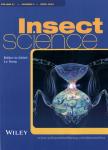Sensitivity of polyphagous(Plodia interpunctella)and stenophagous(Ephestia kuehniella)storage moths to residual insecticides:effect of formulation and larval age
作者机构:Crop Research InstitutePragueCzechia Faculty of ScienceDepartment of Botany and ZoologyMasaryk UniversityBrnoCzechia Faculty of AgrobiologyFood and Natural ResourcesCzech University of Life SciencesPragueCzechia
出 版 物:《Insect Science》 (昆虫科学(英文版))
年 卷 期:2021年第28卷第6期
页 面:1734-1744页
核心收录:
学科分类:0710[理学-生物学] 07[理学] 09[农学]
基 金:supported by project RO0418 of the Ministry of Agriculture of the Czech Republic
主 题:efficacy integrated pest management IRAC pesticides Pyralidae residual
摘 要:Pyralid moths,Ephestia kuehniella and Plodia interpunctella,are prevalent stored product *** insecticides are the main tool to control these moths in the *** data describing the response of these moths to insecticides are *** lethal effect of the organophosphate,pyrethroid,and halogenated-pyrrole on moths larvae were compared in laboratory *** hypothesis was that the very polyphagous ***-punctella would have generally higher insecticide tolerance than that of the stenophagous *** insecticide concentrations were applied onto the inner surface of glass tube *** larvae of 14 or 21 d old of *** and 7 or 14 d old of *** were used by *** larval mortality was checked after 24 h of *** mortality was significantly influenced by age of larvae and the groups of *** differences among the efficacies of the tested formulations with identical active compounds were found,except significant different mortality of *** on deltamethrin formulations.A comparison of analytical standards showed that *** was less susceptible to the active ingredient pirimiphos-methyl than ***,while *** was less susceptible to deltamethrin than *** differences between the two species were observed for *** therefore rejected the hypothesis that polyphagy/stenophagy can be a general predictor of insecticide tolerance in the two tested storage *** most important finding for effective use was that the young larvae of both species were more susceptible to tested insecticides than older larvae.



